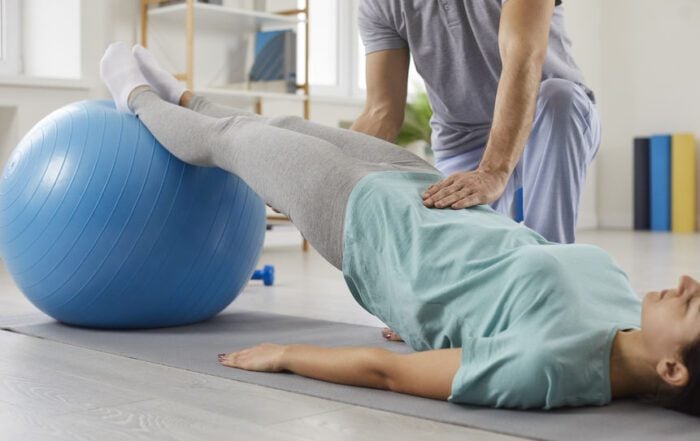Diagnosing Facet Pain
When the torso moves, several structures in the spine help make that movement possible. Facet joints are minute fragments located along the spine on the surface of each vertebra. Those joints are surrounded by cartilage that allows smooth movement with each other. This cohesion also allows for flexibility within the spine. Facet pain, commonly called facet joint syndrome, is any condition that impacts the facet joints and leads to pain. The syndrome is quite common, responsible for up to 70% of back and neck pain cases. Facet pain sometimes requires a doctor’s visit for diagnosis and treatment.

What’s behind your facet pain?
Osteoarthritis or natural wear and tear are the most common causes of facet pain. Joints, including those in the spine, can innately worsen from years of use and activity. Along with osteoarthritis, rheumatoid arthritis (RA) can cause inflammation of the facet joints. Finally, injury or trauma to the spine left untreated can lead to long-term issues. This damage can come from a simple fall, exercise, or even a car accident.
Symptoms requiring a doctor’s visit
Some cases of facet pain are temporary, with the discomfort lasting a few hours or days. However, some symptoms should prompt a doctor’s visit. Chronic pain in the neck and shoulders, for instance, with pulsing and tenderness, can indicate cervical facet joint syndrome. Facet pain can also happen in the mid-back, causing trouble sitting and rib pain. Moving lower, lumbar facet pain can impact sitting and standing. Lumbar facets do not just stick to the back; the pain can move to the buttocks and thighs.
Diagnosing facet pain
If the back or neck pain shows no signs of slowing down, see a doctor or spinal specialist immediately. The doctor will perform physical tests to assess the pain or limitation in movement. In some cases, an x-ray or magnetic resonance imaging (MRI) can help confirm facet damage. The doctor will attempt a facet joint anesthesia injection as a more straightforward diagnostic option. If the patient has immediate relief, this is often a sign of facet syndrome.
Treatment options
With a clear idea of the issue, the doctor can recommend several treatments to get the pain under control. Non-invasive treatments include physical therapy (PT), muscle relaxers, and anti-inflammatory medication. Other treatments include radiofrequency, corticosteroid injections, and medial branch blockers. Each approach brings varying degrees of relief over different timeframes. If non-surgical treatments fail, surgical procedures like facetectomy can provide long-term relief.
A better facet
Back or neck pain due to facet joint dysfunction can be stressful. The good news is that early identification of symptoms and appropriate treatment can help. A healthy spine is integral to movement and overall vitality. Keep joints healthy and seek help if pain ever gets out of control.
Recent Posts
What To Do About Hip Pain: Is It Time To See An Orthopedic Surgeon About Labral Repair?
Hip pain should not be overlooked, as the issue could be a labral tear. Symptoms like pain and instability require an orthopedic surgeon’s assessment.
ACL Repair: Will You Have Range Of Motion With Your Knee After Recovery & Physical Therapy?
After an ACL injury, ROM can be negatively affected. ACL repair surgery helps restore function, but physical therapy is essential to ROM.
Arthroscopy: What Are The Benefits Of This Minimally Invasive Outpatient Orthopedic Procedure?
Arthroscopy can help diagnose or treat joint conditions. Benefits of the MIS include faster recovery, less pain, and fewer scars.
Posterior Interbody Lumbar Fusion: What Are The Benefits Of PLIF For People With Back Pain?
People with chronic back pain may benefit from posterior interbody lumbar fusion surgery. PLIF can reduce pain and improve stability.








